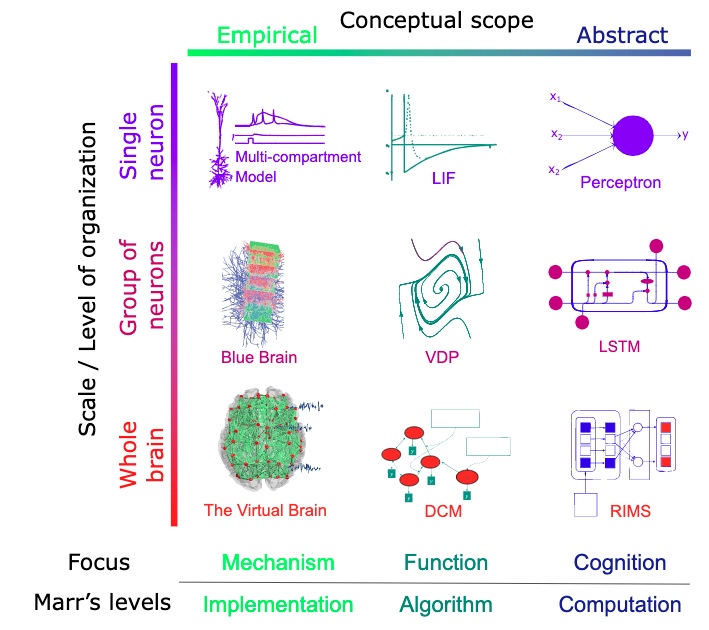Generative Models of Brain Dynamics — A review
 Abstract
Abstract
The principled design and discovery of biologically- and physically-informed models of neuronal dynamics has been advancing since the mid-twentieth century. Recent developments in artificial intelligence (AI) have accelerated this progress. This review article gives a high-level overview of the approaches across different scales of organization and levels of abstraction. The studies covered in this paper include fundamental models in computational neuroscience, nonlinear dynamics, data-driven methods, as well as emergent practices. While not all of these models span the intersection of neuroscience, AI, and system dynamics, all of them do or can work in tandem as generative models, which, as we argue, provide superior properties for the analysis of neuroscientific data. We discuss the limitations and unique dynamical traits of brain data and the complementary need for hypothesis- and data-driven modeling. By way of conclusion, we present several hybrid generative models from recent literature in scientific machine learning, which can be efficiently deployed to yield interpretable models of neural dynamics.



Leave a Reply